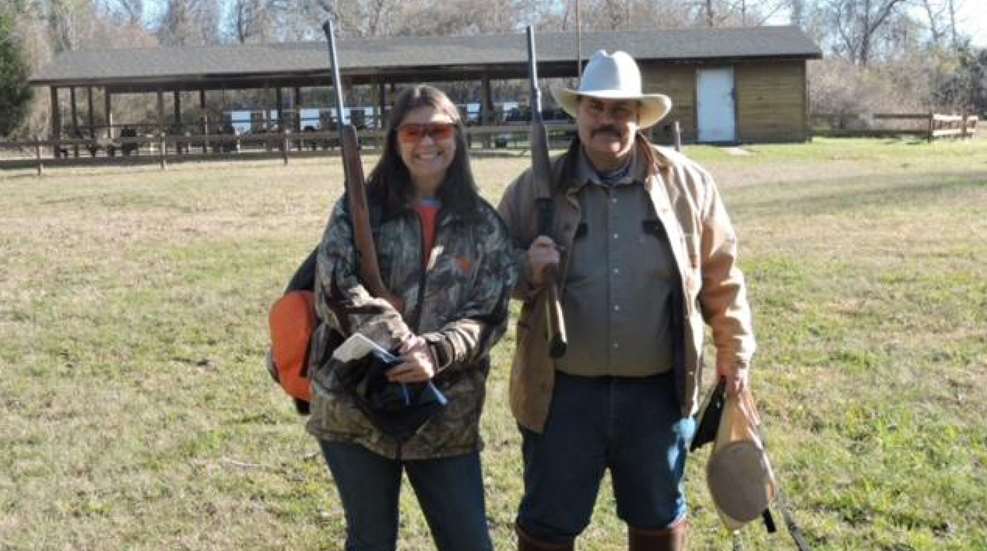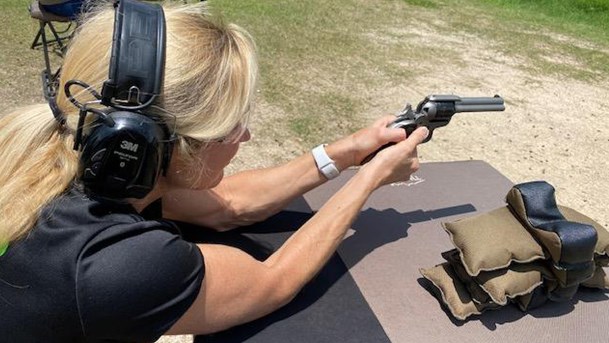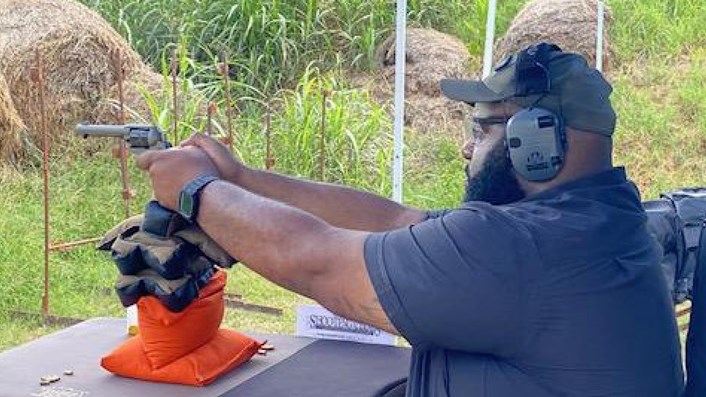4 Tools Firearm Instructors Shouldn’t Be Without
One of the keys to great firearm instruction is the ability to adapt to each student. These tools can help.
by HEIDI LYN RAO posted on July 20, 2023
NEWS, HOW-TO, TIPS & TACTICS, GEAR, FIREARMS

Anyone who has ever conducted handgun training can tell you that it can be just as challenging for the instructor as it can be for the student. No two students are the same. Each has his or her own set of challenges, be it poor techniques, lack of confidence, or fears. Just as each student is unique from other students, an instructor is a unique, and differs from other instructors.
Many self-taught instructors who find their platform across a variety of social media channels lack the formal training that separates bad instructors from good ones. These self-taught instructors usually have only one teaching style. They also usually teach incorrect techniques with predictable results. A student only retains 65 percent of information, and if that information is incorrect, that is what they will demonstrate and take away after the training.
I regularly encounter students that have been taught incorrectly. Sometimes it takes more than half of the training session to correct incorrect techniques. These students are also more likely to revert to their incorrect shooting techniques because they have usually spent more time practicing at the range with bad habits. Practice does not make perfect—perfect practice makes perfect.
A good instructor should have many delivery and teaching techniques that resonate with their student. Each student learns differently so an instructor should not be so rigid that they cannot change their teaching techniques. Sometimes it can be as simple as changing your tone, changing the way you say something, or even changing the types of guns that are used during range time.
This is the reason I like teaching with another instructor. Just as each student learns differently, each instructor teaches differently. If the other instructor is having a difficult time in getting the desired results for their student, the other instructor passes their student over to me. If I have a student that I am not getting the results that I want, I pass them over to the other instructor. Both of us can communicate the exact same message but in a different way and get the results we are looking for.
The NRA’s method for teaching the safe and proper use of firearms is very effective. The NRA has many tips and suggestions for training a student. Of all the training techniques that are noted, there are four that are a MUST when training a new student to properly use a firearm. These are using a benchrest; using firearm support; starting with a small caliber; and bringing a variety of firearms. These are the keys to success when training a new shooter.
Benchrest
Sitting at the benchrest is common when shooting rifles at the range, especially rifles used for hunting. A benchrest allows hunters and long-range shooters to sight in their optics and practice placing shots at distances of 100 or more yards. Ranges with benchrests are usually full of shooters right before deer season opens.

Benchrests are usually found at outdoor ranges. They are not as common in indoor ranges because these operations do not have the distances rifle shooters are looking for. Many pistol shooters have never fired a handgun from a benchrest. I often ask this in my classes and very few pistol shooters say they have ever shot from this position. After I start all my students shooting from a benchrest position, everyone in my class, even the most skeptical, see the benefits of starting a new shooter from the benchrest position. That is because it works!
There are many benefits to shooting, both rifles and handguns, from a benchrest. This position is the most stable platform to shoot from. The shooter can have up to seven points of contact from the benchrest position—two feet, the butt, two elbows, and when you have sandbags, two hands or wrists for additional support. This helps the shooter keep the handgun steady. Even though it is impossible to hold a gun completely still, the benchrest helps in keeping it as motionless as possible.
Firearm Support
Every instructor should provide some type of firearm support for their students to shoot from. Firearm supports can be sandbags, adjustable rests, bags of dried beans or rice, or even a hunting or day pack. Firearm supports help to stabilize the firearm and minimize movements. It is impossible for any shooter to hold a firearm completely still when shooting. With practice, an experienced shooter can minimize movement but can never eliminate it. This is because we breathe, have a heartbeat, and a pulse.

Most of my students have never shot a handgun off some type of support. They quickly understand how effective this technique can be when instructing a new student. Whereas an experienced shooter has learned how to remain relatively still, a new student has not developed the skills, techniques, and muscle memory to minimize their movements. By offering a new shooter firearm supports, they can more easily concentrate on the five fundamentals of shooting (aiming, breath control, hold control, trigger control, and follow through).
Small Caliber
I start every training session with a .22-cal. revolver regardless of the shooter’s experience. This allows me to observe the shooter and determine if he or she is following the five fundamentals of shooting. Sometimes I am met with resistance. When the student tells me how experienced they are when shooting their 9mm, .40 cal., .45 cal., etc., I respond, “then you should have no problem hitting the target with a .22 caliber.†After all, if your student cannot hit their target with a .22-cal. firearm, then they probably cannot do it with something larger.
A .22 caliber is a great training tool. It almost always eliminates flinching, eliminates distractions, and especially eliminates excuses. Even the most nervous student is set at ease after they shoot a small caliber firearm. Fortunately, more and more individuals who want to teach others how to shoot are seeking NRA training. I know that the students who go through my NRA Instructor Courses and learn the benefits of starting new shooters with a small caliber firearm, almost all of them state that their next purchase is going to be some type of .22-cali. handgun.
Variety of Firearms
Having a variety of firearms on hand can be a very effective technique when you have a new shooter who is having trouble hitting where they are aiming after learning and executing the five fundamentals of shooting. An instructor should always question their student regarding the firearm they will be using before meeting at the range. If the firearm your student is using does not fit them, you will not be very effective as an instructor. As an instructor, you can only do so much if your student cannot properly hold their firearm or handle the recoil.
Many times, you will hear your students say that the gun they have was picked out by their husband, boyfriend, or recommended by the salesman behind the counter. You will also hear that the chosen firearm is based off popularity or even one that they have seen or “used†in a video game. I always have several firearms of different calibers, sizes, and weights. Most of the time, if a student is having trouble with their firearm, it is because it does not fit them. I let them try different firearms and they almost always prefer one that I brought. This allows me to teach my students the fundamentals rather than fighting their guns and trying to overcome bad habits.
It takes the right tools to do any job. Firearms training is no different. The right tools are essential for success when you are training a new shooter. They are necessary to eliminate the obstacles that prevent your students from being able to concentrate on your instructions. Success makes happy students, happy students make effective shooters, and effective shooters make new members in our 2nd Amendment community!
